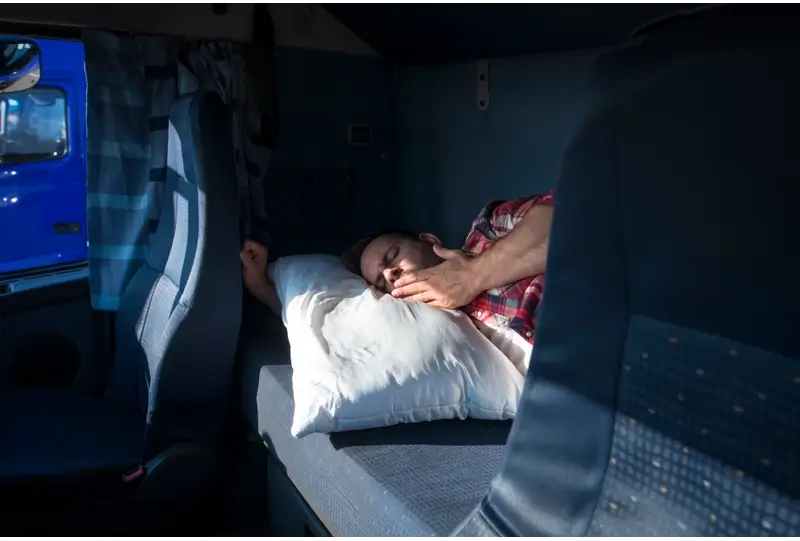Discover expert tips for quality sleep while traveling. Beat jet lag, optimize your sleep kit, and rest easy on any trip. Safe travels, sweet dreams!
Hey friends, let’s chat about how to get quality sleep while traveling. I’ve been on the road for years, from backpacking through Europe to business trips across Asia. Nothing ruins a great adventure faster than tossing and turning all night. Trust me, I’ve learned the hard way that prioritizing rest keeps you sharp and enjoying every moment.
Picture this: I once landed in Tokyo after a red-eye from the States, feeling like a zombie. My body clock was flipped, and the hotel noise didn’t help. But over time, I’ve figured out tricks that make a huge difference. Sleep isn’t just downtime; it’s fuel for your trips. When you’re well-rested, you hike farther, taste food better, and handle delays without snapping.
Good sleep boosts your immune system too. It sharpens your mind and lifts your mood. I’ve noticed that skimping on rest leads to grumpy days and even catching colds easier. So, let’s dive into what messes with your slumber on the go and how to fix it.
Why Travel Throws Off Your Sleep
Travel shakes up your routine in sneaky ways. New beds feel weird at first. Noises from streets or neighbors keep you alert. Your brain stays half-awake in unfamiliar spots, like it’s on guard duty.
Jet lag hits hard when crossing time zones. Your internal clock lags behind, making you wide awake at 3 a.m. Eastward trips often feel worse for most folks. I’ve crossed the Pacific plenty, and it takes days to sync up without a plan.
Travel fatigue piles on too. Long drives or flights drain you mentally. Stress from packing or delays adds up. Motion sickness or cabin pressure leaves you bloated and uncomfortable.
Schedule shifts sneak in as well. Late dinners or early tours mess with your usual bedtime. Even without far-flung flights, these changes build up. I’ve skipped workouts on busy days, only to stare at the ceiling later.
Diet and exercise routines falter. Heavy airport meals or extra drinks disrupt digestion. Less movement stiffens you up. All this combines to make quality sleep elusive while traveling.
Pre-Trip Prep for Solid Rest
Start planning sleep before you leave home. I always adjust my bedtime gradually. For eastward trips, I go to bed an hour earlier each day for three days. It eases the shock when you arrive.
Check your itinerary for time differences. If it’s a short stay, under two days, stick to your home schedule. I’ve done this for quick conferences, scheduling meetings during my peak hours. It avoids double adjustment on the way back.
Manage light exposure early. Use apps to simulate the destination’s day-night cycle. I wear blue-light blockers in the evenings to wind down. This boosts melatonin naturally.
Pack meds if needed. I consult my doc about melatonin doses. Low amounts, like 1-3 mg, timed right, help shift your clock. But test it first at home to avoid surprises.
Hydrate and eat light in the days before. I cut caffeine after noon. This sets a strong foundation. Small steps like these make landing refreshed a reality.
Building Your Sleep Travel Kit
No trip leaves my house without my sleep kit. It’s like a portable comfort zone. Essentials fit in a small pouch, ready for any disruption.
First, a travel pillow. I swear by memory foam ones that mold to my neck. Inflatable versions pack tiny and adjust firmness. Washable covers keep them fresh.
Eye masks are non-negotiable. I pick contoured ones that don’t press on my eyes. Soft silk feels great and blocks hotel lights completely. Adjustable straps ensure a snug fit.
Earplugs block out noise. Foam ones expand for a custom seal. I carry silicone reusables too, easy to clean. They mute airplane engines or chatty roommates.
Blue-light glasses join the mix. I wear them two hours before bed to filter screens. Sunglasses help during bright layovers when I need to dim things.
Extras like electrical tape cover blinking LEDs in rooms. A small thermometer checks temp. Fuzzy socks warm feet, dropping core body heat for faster sleep onset.
Picking Sleep-Friendly Stays
Accommodation choice sets the sleep tone. I scout quiet spots away from busy roads. Reviews mention noise levels, so I read them closely.
Look for soundproofing features. Thick walls and double-pane windows muffle sounds. I once stayed in a city center hotel with these, sleeping like a baby.
Bed quality matters. Memory foam or pillow-top mattresses cradle you. Request extra pillows if options vary. Hypoallergenic bedding helps if allergies flare.
Room amenities count. Blackout curtains are gold. Air conditioning keeps it cool, around 65°F. Some places offer white noise machines or aromatherapy.
Balance location with peace. Serene suburbs near transit work well. I’ve traded convenience for quiet and never regretted it. Apps filter for “quiet” tags now.

Beating Jet Lag and Time Zone Shifts
Jet lag used to wreck my trips. Now, I tackle it head-on. Upon arrival, get sunlight right away if it’s morning. It resets your clock fast.
For eastward jaunts, seek light in late morning. Westward? Early evening exposure helps. I walk outside, even if tired, to sync up.
Melatonin timing is key. Take it to advance your clock for east travel. Delay it for west. I use apps to calculate doses based on zones crossed.
Stay active during local day hours. Short naps, under 30 minutes, recharge without ruining night sleep. I avoid them after 3 p.m.
Hydrate extra on flights. Cabin air dries you out, worsening fatigue. I sip water steadily and skip alcohol, which fragments sleep.
Gradual pre-adjustment works wonders. For big shifts, I start a week out. This way, day one at the destination feels normal.

Setting Up a Relaxing Sleep Space Anywhere
Turn any room into a sleep haven. First, dial in temperature. I aim for 60-67°F. Use fans or blankets if controls are iffy.
Block light completely. Close curtains tight. Towel under the door stops hallway glow. My eye mask handles the rest.
Minimize noise. White noise apps drown out disturbances. I play rain sounds on my phone. Earplugs seal the deal.
Scent the air if possible. Lavender essential oil calms me. Some hotels provide diffusers; otherwise, I carry a small spray.
Arrange bedding familiarly. Fluff pillows like home. I even bring my own pillowcase for that comforting scent. Small tweaks make big differences.
Crafting a Bedtime Routine on the Road
Routines signal sleep time to your brain. I keep mine simple wherever I am. Start with dimming lights an hour out.
Deep breathing relaxes me. Try the 4-7-8 method: inhale four, hold seven, exhale eight. It slows racing thoughts.
Read a light book, nothing thrilling. I avoid screens to dodge blue light. A warm shower drops body temp, mimicking natural sleep cues.
Consistent times help. Even on vacation, I aim for the same bedtime. Wind down with yoga poses like child’s pose for tension release.
Journal if needed. Jot down tomorrow’s plans to clear your mind. This ritual turns chaotic days into peaceful nights.

Diet and Exercise for Travel Sleep
What you eat affects shut-eye. I avoid heavy meals close to bed. Light snacks with protein keep blood sugar stable.
Cut caffeine six hours before sleep. Tea, soda, chocolate all count. Herbal chamomile soothes instead.
Alcohol seems relaxing but fragments rest. I limit to one drink early. Hydration counters its effects.
Exercise daily, but not late. Morning walks energize me. 30 minutes of movement promotes deeper sleep cycles.
Balanced nutrition fuels recovery. Fruits, veggies, nuts over junk. I’ve noticed better energy and easier sleep when eating clean.
Sleeping Well During Transit
Transit sleep is tricky but doable. On planes, choose window seats for leaning. I book aisles for stretching legs.
Neck pillows prevent head bobs. Layer clothes for warmth. Noise-canceling headphones block engine hum.
For road trips, rotate drivers. Pull over for power naps in safe spots. I set timers to avoid deep sleep grogginess.
Trains offer more space. Recline seats fully. Bring blankets for coziness. Timing rides for natural sleep hours helps.
Stay mindful of safety. Never drive drowsy. I’ve pulled into rest stops for quick shuts-eye, refreshed for the road.
Handling Common Sleep Hiccups on Trips
Waking mid-night happens. Don’t clock-watch; it stresses you. I visualize calm scenes to drift back.
If allergies hit, pack meds. New pollens can stuff you up. Humidifiers in dry hotels ease breathing.
Stress from plans? Meditate briefly. Apps guide short sessions. I breathe deeply to quiet worries.
Overstimulation from sights? Unwind with tea. Avoid late caffeine. Journaling processes the day gently.
For kids along, sync routines. Consistent bedtimes anchor them. I’ve traveled with family, and it works wonders.

Frequently Asked Questions
How long does jet lag usually last?
It varies by zones crossed. Typically, one day per zone. Eastward takes longer for most. With my strategies, I’ve cut it to half.
Is melatonin safe for travel?
Yes, in low doses for short use. Consult a doctor first. I use 1-3 mg, timed carefully. Avoid if pregnant or on certain meds.
What if I can’t sleep on planes?
Pack aids like masks and plugs. Choose comfy seats. I practice relaxation techniques. Short flights? Just rest eyes.
Does exercise really help sleep while traveling?
Absolutely. Moderate activity regulates your clock. I walk daily. Avoid intense sessions near bed; mornings are best.
How do I choose a quiet hotel room?
Request higher floors away from elevators. Read reviews for noise. Apps show quiet areas. I’ve emailed ahead for preferences.
Can diet fix travel insomnia?
It helps a lot. Avoid heavy, spicy foods at night. Stay hydrated. I eat balanced and notice smoother sleep.
What’s the best temperature for sleeping in hotels?
60-67°F works for me. Adjust AC or fans. Layers help if controls fail.
Should I nap during trips?
Short ones, yes. 20-30 minutes max. Later than 3 p.m.? Skip to protect night sleep.
How to sleep better in new beds?
Bring familiar items like pillowcases. Adjust pillows. I do yoga to relax muscles.
Is sleep tourism worth it?
Totally, if rest is your goal. Hotels with wellness focus recharge you. I’ve tried and felt amazing.
Wrapping It Up
There you have it, pals—my take on mastering quality sleep while traveling. From prepping your kit to tweaking routines, these hacks have saved countless trips for me. Remember, rest isn’t optional; it’s what makes adventures epic. Next time you’re packing, think sleep first. You’ll thank yourself when you’re exploring full of energy. Safe travels, and sweet dreams out there.
8 web pages



